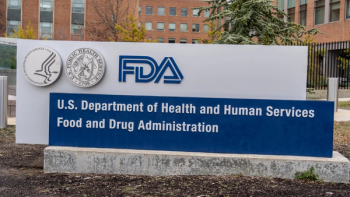In today's increasingly complex oncology landscape, securing favorable market access has evolved far beyond demonstrating clinical efficacy. As healthcare costs continue to rise and payers become more discerning with their limited budgets, pharmaceutical companies confront unprecedented challenges in demonstrating the true value of their oncology treatments. The critical question reverberating across biopharma is no longer simply "Can we get approval?" but rather "Can we live with the label we receive?"
Key Takeaways
- Integrating multidisciplinary expertise throughout clinical development programs, product communications, and access strategies has become a critical differentiator that all biopharma organizations must master to ensure their innovations to reach those who need them most.
- Payers restrict newer or more expensive therapeutics to later lines of treatment, mandating that patients fail on standard first-line therapies first.
- While the payer landscape has become increasingly restrictive for oncology products, forward-thinking manufacturers are developing sophisticated strategies to optimize their labels and overcome access barriers from the earliest stages of development through the entire product lifecycle.
Integrating multidisciplinary expertise throughout clinical development programs, product communications, and access strategies has become a critical differentiator that all biopharma organizations must master to ensure their innovations to reach those who need them most. In the past, remarkable data alone moved the needle, and virtually guaranteed patients would receive new therapies. Today, we must be smarter, faster, and more collaborative across all ecosystem stakeholders to ensure innovation reaches patients.
This evolution reflects a fundamental shift in power dynamics within the healthcare ecosystem. Regulatory approval, once the primary hurdle, has become merely the first step in a longer, more complex journey toward patient access. The specific parameters defined in your label, including patient population, line of therapy, and outcomes measured, will now directly determine the ability of innovative oncology assets to secure favorable reimbursement and formulary positions. As payers scrutinize oncology treatments with ever increasing rigor and demand greater evidence of value, the strategic importance of label optimization has never been more critical to commercial success.
The Anatomy of Payer Restrictions: How Labels Become Barriers to Patient Access
Payers deploy sophisticated utilization management strategies that systematically reference specific elements within oncology product label when establishing coverage criteria. These approaches, while ostensibly designed to ensure appropriate use and manage costs, generate substantial access barriers limiting market uptake. Understanding these coverage criteria development processes is crucial for developing launch strategies, particularly when the goal includes a frictionless patient and provider experience.
The scope of the balance between access and affordability is immense, and when poorly executed, can cascade into unfortunate consequences for patients and providers. In a survey of 300 oncologists, 97% report prior authorization as burdensome, with consequences including treatment delays (96%) and forcing patients onto second-choice treatments 93% of the time. Most alarmingly, 36% of respondents reported the strongest perspective, oncologists felt patients died in their care due to PA requirements.1,2 This raises the critical question: what are the key components that payers are leveraging to create PA and other access barriers?
Line of Therapy Limitations: The Step Edit Trap
The most pervasive restriction involves line of therapy specifications. Payers restrict newer or more expensive therapeutics to later lines of treatment, mandating that patients fail on standard first-line therapies first. This creates untenable situations where patients may not be appropriate candidates for less expensive first-line options due to side effects or other clinical complexities yet, are compelled to try and fail a product before accessing the optimal agent.
This approach directly contradicts personalized medicine, where treatment selection should be predicated on individual patient characteristics rather than arbitrary sequencing requirements designed primarily for cost containment. Many experts advising biopharma on clinical study design recommend moving away from targeting specific lines of therapy whenever possible. When this approach is not feasible for robust regulatory approval, consider supplementing with real-world evidence (RWE) that will support broader clinical value more holistically based on patient phenotype including disease characteristics (e.g., biomarker testing), patient attributes (e.g., comorbidities), and patient journey (e.g., drug sequencing and response).
The Biomarker Coverage Paradox
When package inserts specify treatment limitations based on genetic mutations or biomarkers, payers routinely require documented testing results before approval. However, the challenge becomes cyclical: payers frequently decline to cover the biomarker testing required for the drug they're being asked to cover.
This paradox is particularly acute with comprehensive genomic profiling. While labels may specify that treatment should be limited to patients with genetic alterations, these alterations are most accurately identified through broader next generation sequencing, which payers systematically restrict. Payers often favor less expensive single gene, short panel, or tissue-based tests that miss clinically relevant mutations, thereby limiting identification of patients who will benefit from treatment. In one study, 29% of surveyed patients who required biomarker testing did not have the test covered by their insurance, creating a substantial barrier to accessing precision therapies.3
Performance Status, Age, and Patient Selection: The Trial Population Trap
Although package insert "Indications and Usage" sections may not explicitly specify performance status requirements (such as ECOG scores), age cut-offs, or exclude certain patient populations due to comorbidities, products may still face highly restrictive payer coverage policies. Payers routinely write coverage criteria that effectively limit access to only those patients who would have been eligible for the pivotal clinical trial, rather than embracing the broader population encompassed by the FDA-approved label.
This creates a profound disconnect between regulatory approval and real-world access. In clinical practice, patients present with varying levels of fitness, diverse age ranges, and more complex comorbidities than the carefully selected trial populations. When payers impose trial-based eligibility criteria as coverage requirements, they artificially narrow access to treatments that could benefit a substantially broader patient population.
These restrictions, commonly found in publicly available prior authorization criteria from national insurance carriers, effectively limit access to potentially beneficial treatments for real-world patients who may not have met the stringent inclusion criteria of registration trials but could still derive meaningful clinical benefit.4
Strategic Approaches to Enhance Market Access
While the payer landscape has become increasingly restrictive for oncology products, forward-thinking manufacturers are developing sophisticated strategies to optimize their labels and overcome access barriers from the earliest stages of development through the entire product lifecycle. Through extensive work with biopharma companies navigating these challenges, certain strategic approaches have proven most effective in achieving favorable market access outcomes.5
Early Commercial Development Label Engineering
The most effective strategy begins during clinical development when the therapeutic asset's pivotal study is being designed. In the optimal scenario, the pipeline product team collaborates closely with matrix partners or external expertise encompassing medical strategy, evidence generation, and US market access experts to shape clinical trial and real-world endpoints that will resonate with both regulatory bodies and payers respectively. Additional guidance should be explored using mechanisms like Oncology Regulatory Expertise and Early guidance (OREEG) and clinical key opinion leaders (KOLs) with extensive regulatory expertise. This combined product-type advice helps inform drug development decisions so manufacturers can shape label language that minimizes restrictive interpretation. This includes negotiating broader indication language, avoiding unnecessarily narrow patient populations, and ensuring dosing flexibility where clinically appropriate.6
Real-World Evidence and Agile Trials: A Critical Component of Competitive Edge
Robust post-market studies demonstrating effectiveness in broader patient populations than those studied in pivotal trials will support payer prior authorization coverage expansions beyond clinical trial criteria. This is particularly valuable for patients who did not meet clinical trial inclusion criteria but still benefit from treatment. The FDA's Advancing Real-World Evidence Program offers sponsors strategic opportunities to discuss study designs that meet regulatory requirements in support of labeling for effectiveness.7
Regulatory and KOL experts paired with primary market access research from payers can guide biopharma in pursuing and designing credible, compelling, and relevant RWE early to ensure a comprehensive label at product launch with forthcoming data to close evidence gaps and eliminate discrepancies that payers leverage to narrow coverage policies. In addition to RWE, pursuing additional clinical trials in broader populations or earlier lines of therapy provides an expanding evidence base for label expansions and broader payer coverage policies. Investigator-sponsored trials can provide another layer of supporting evidence for coverage decisions while building clinical advocacy across KOLs. Adaptive trial designs that can demonstrate efficacy across multiple patient subgroups provide data to support broader label language and more flexible coverage policies. All of these data combined are essential for securing optimal positions in guidelines and pathways.
Health Economics: Speaking the Payer Language and Early Payer Engagement
Developing comprehensive pharmacoeconomic studies showing cost-effectiveness compared to existing therapies or even placebo in now essential globally. Research focused on value beyond traditional safety and efficacy is essential for market access in the US. Examples include total cost of care, overall survival, time to next treatment, and cost reduction offsets like hospitalization and productivity (e.g., patient-reported outcomes) that help payers contextualize and predict the value of a product. In addition to pharmacoeconomic studies, budget impact models (BIMs) that account for real-world patient journey elements like the costs of failed prior therapies, supportive care, and disease progression, can provide compelling narratives for coverage decisions. These models must extend beyond simple drug acquisition costs to encompass the full economic impact of treatment decisions tailored to the specific payer.
Scientific Communication Strategy
Early engagement with key payers directly and through primary market access research during product development reveals coverage priorities and shapes post approval access strategies. Comprehensive dossiers that articulate clinical rationale for broader use patterns, combined with targeted advisory boards, educate payers about disease states, unmet medical needs, and how new treatments will integrate with existing care pathways.
Oncology guidelines like NCCN significantly influence cancer drug coverage decisions made by both public and private health insurers, acting as a crucial guide for determining whether a treatment is medically accepted and often providing broader treatment recommendations than FDA labels. Payers find it difficult to restrict access to NCCN endorsed regimens with high levels of evidence and consensus. While manufacturers must maintain appropriate independence from NCCN guideline development, medical affairs teams can strategically engage KOLs to identify the most compelling study designs and data elements that support NCCN submissions. Additionally, monitoring guideline updates helps manufacturers anticipate and interpret coverage decision impacts.
Understanding which guidelines payers prioritize enables manufacturers to design studies and craft label language that align with these frameworks, creating pathways for broader coverage even when regulatory language may be restrictive.
The Path Forward: Strategic Imperatives for Success
The fundamental shift from "Can we get approval?" to "Can we live with our label?" represents more than a change in regulatory strategy, it signals a complete transformation in how oncology innovation reaches patients. Success now requires manufacturers to anticipate payer restrictions, design comprehensive evidence packages, and engage stakeholders early to shape favorable coverage decisions.
The most successful companies will integrate label optimization into every stage of development, from initial trial design through post-market evidence generation. They will proactively address the biomarker coverage paradox, avoid the step edit trap, and build compelling economic cases that speak directly to payer priorities. Most importantly, they will recognize that in today's environment, a narrow regulatory win often translates to a commercial loss.
For biopharma executives, the choice is clear: evolve your approach to match the new reality or watch breakthrough therapies become trapped behind restrictive coverage policies. The organizations that master this integration of regulatory strategy, RWE, and market access planning will achieve commercial success and ensure that life changing innovations reach the patients who need them most.
Sources
- www.asco.org/news-initiatives/policy-news-analysis/nearly-all-oncology-providers-report-prior-authorization
- www.cancertherapyadvisor.com/features/oncology-prior-authorization-burdens-barriers-to-care/
- hitconsultant.net/2023/04/14/prior-authorization-leads-to-treatment-delays-for-cancer-patients/
- client.formularynavigator.com/Search.aspx?siteCode=1200880062
- www.pharmexec.com/view/oncology-brands-market-access-commercial-success
- www.fda.gov/about-fda/oncology-center-excellence/oncology-regulatory-expertise-and-early-guidance-oreeg
- www.fda.gov/drugs/development-resources/advancing-real-world-evidence-program#:~:text=Eligibility%20Criteria%20*%20The%20sponsor%20has%20an,study%20design




